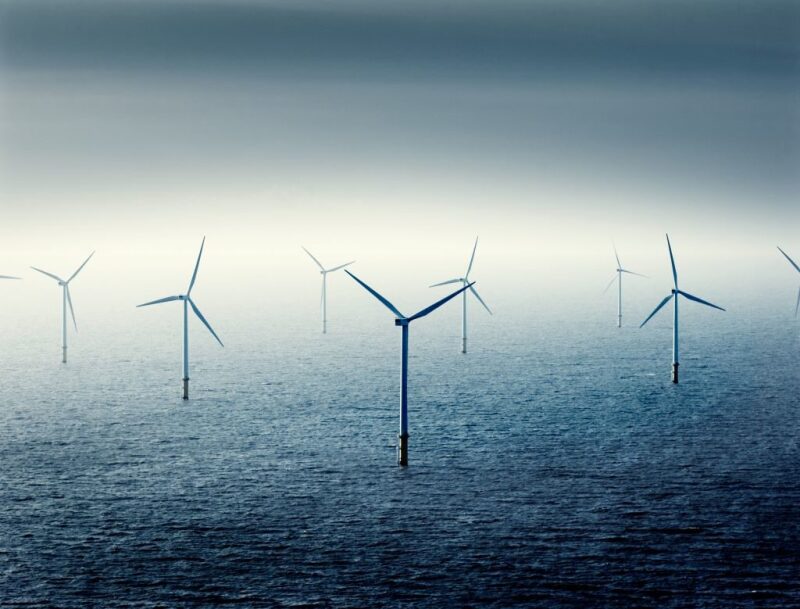Consultants Westwood Energy Group has outlined a half dozen key themes that will impact the offshore wind sector in 2022, including smaller capacity additions for China compared to last year as state-sponsored subsidies lapse. New capacity additions globally were six times higher than the 2.5 GW it installed in 2020. Via these new projects, China accounted for the lion’s share (86%) of global capacity additions and surpassed the UK in terms of the world’s largest installed base of offshore wind capacity.
Mainland China must now grapple with a national subsidy-free reality in 2022, where the project tariff will be based on the prevailing coal-fired power tariff, which is significantly less than the previous offshore wind FiT (feed-in-tariffs) for projects commissioned by December 2021. This will force the industry to find further capital and operational spending reductions – whether it be through technology innovation, supply chain collaboration, or other optimization measures.
To the west, the fourth round of the UK’s CfD (Contracts for Difference) subsidy allocation opened on 13 December 2021; successful auction bidders are expected to be announced between April and July 2022. This is the largest-ever CfD round in the UK, with $264 million a year being allocated for fixed-bottom offshore wind. The allocation is set to be key to the UK achieving its ambition of reaching 40 GW of offshore wind by 2030.
In addition, a further $100 million has been set aside for emerging technologies, of which $32 million has been earmarked for floating wind. Of the UK’s 40 GW target, 1 GW is expected to come from floating wind.
In 2022, Westwood expects oil and gas companies to further invest in the offshore wind space either through the purchase of equity in existing projects or winning new development tenders. Several auctions are currently taking place and are scheduled to be concluded in 2022. These include the rights to develop the Normandy and Brittany wind farms in France and the granting of licenses for the development of two to three projects which will be located offshore Norway via the Sorlige Nordsjoe II auction.
While Equinor has been the oil and gas industry’s offshore wind frontrunner, four other operators stand out in recent activity—bp, Shell, Eni, and TotalEnergies. The four companies have been very active in auction processes, placing bids either as a sole entity or in partnership with other stakeholders that complement or augment their offshore wind capabilities. The consortia being led or supported by bp, Shell, and TotalEnergies were offered option agreements of more than 9.9 GW in the ScotWind offshore wind lease auction—almost the size of the UK’s current installed base—comprising both fixed and floating development types.
Excluding the auctions, these four companies have equity stakes in projects equivalent to 8 GW of capacity that are either in the planning, EPCI or operational phase. These projects are across mature offshore wind markets such as the UK and Netherlands, and in less mature/emerging markets, such as the US, France, Norway, South Korea, and Ireland.
In the US, the Biden administration has committed to a 2030 offshore wind target of 30 GW. Aside from some 8,434.5 MW of offshore wind capacity being awarded in solicitations conducted by the states of Maryland, Massachusetts, New York, and New Jersey, the US Department of Interior also issued its very first Record of Decision which enabled Vineyard Wind (Avangrid and CIP joint venture) to take final investment decision on its 800-MW Vineyard Wind 1 development in September 2021.
These solicitations are set to continue in 2022, with the State of New York recently announcing that the next round of offshore wind procurement will be launched this year. A lease auction is also scheduled to take place next, with a total of six lease areas under offer. The lease areas are all located in the New York Bight federal waters, offshore New York and New Jersey. The six sites have the potential to add between 5.6 GW and 7 GW of additional offshore wind capacity.
Today, fixed-bottom developments account for almost all the world’s operational wind capacity; floating wind has been widely acclaimed as the future. In 2021, the world’s largest floating wind development, the 48-MW Kincardine Phase 2, came online. Despite being considered a nascent technology, there are numerous floating wind development proposals in both mature and emerging offshore wind jurisdictions, and this trend is expected to continue to expand in 2022. This commercialization effort comes with new players, such as BW Ideol, Hexicon, Fukushima Forward, and Principle Power entering the market. Westwood also believes government support will heat up floating wind development in 2022.
The production of green hydrogen powered by offshore wind could significantly increase the commercial value proposition of projects. While the industry is still at an early stage of development, there are several offshore-wind-related green hydrogen demo projects to watch, including Vattenfall’s Hydrogen Turbine 1 (HT1) off east Scotland (to be installed at the operational Aberdeen Bay wind farm), Shell’s Hydrogen Holland I (to be powered by Hollandse Kust Noord), and ERM’s Dolphyn Hydrogen Project etc.
The outlook for hydrogen remains uncertain, owing to its relative cost, complexity of the value chain, and individual country decarbonization challenges. But in 2022 Westwood anticipates that different hydrogen strategies will begin to crystallize. For instance, the UK is set to launch a Net-Zero Hydrogen Fund and California’s latest budget plan for 2022–2023 earmarks $100 million to promote green hydrogen. Westwood sees these government initiatives as providing further confidence for offshore developers to consider the green hydrogen opportunities in their commercialization strategies.


